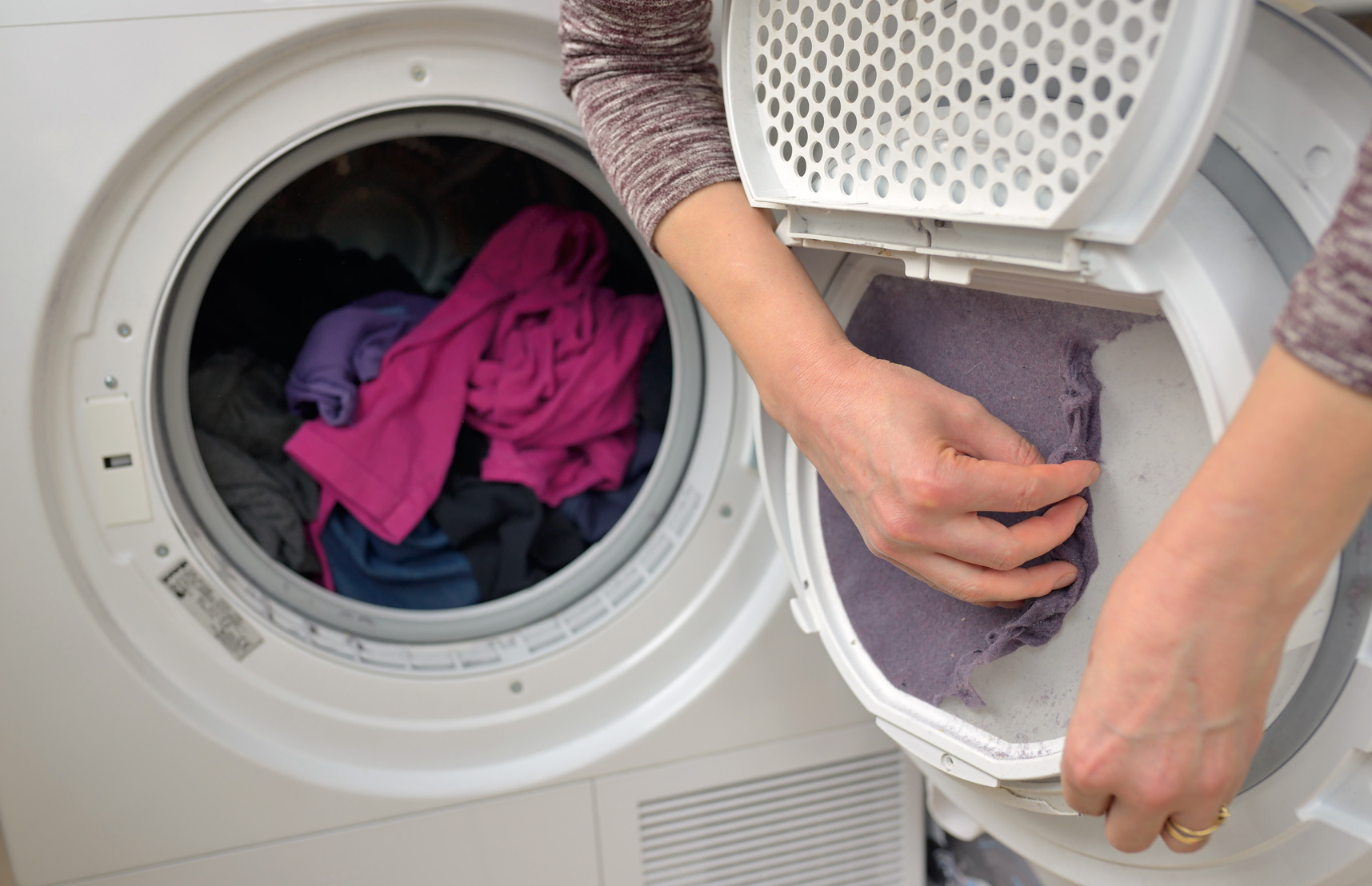As your clothes whirl around the washing machine, your trusty appliance puts your clothes through the ringer. An essential household unit, the washing machine dutifully breathes new life into your garb and adds a fresh scent to newly laundered apparel.
The dryer has an equal importance in your home, completing the other half of the task of cleaning your tops and bottoms. If you weren’t aware before, you soon will recognize the importance of washing machine and dryer maintenance.
Regularly Clean the Washer
How often should you clean the washing machine? Regular machine cleanings prevent detergent streaks from appearing on newly laundered whites and darks. The white residue from the soaps used to wash your clothes is more apparent on dark colored apparel. Fabric softener and the dirt captured inside the washing machine can also leave unappealing marks on your garments.
The frequency of washing machine cleanings depends on whether you own a standard top load machine, a front load machine or a high efficiency top load washer. For example, high efficiency washers require monthly cleanings.
Plus, the type of water pumped into your plumbing makes a difference. If your home is situated in a hard water zone, you should clean the washing machine every three months. Otherwise, cleanings performed at least twice annually are adequate.
Clean with Vinegar and Bleach
All it takes to clean a standard top load washer is two washing cycles, one with bleach and one with vinegar. First, fill the washer with the hottest water allowed on the machine’s settings. Pour one quart of bleach into the washer—do not add detergent. Allow the washer to run its course, through both the wash and spin cycles.
Once the appliance stops, repeat with one quart of vinegar. The vinegar will not only cleanse the machine, but the vinegar will prevent any bleach residues from streaking your clothes in subsequent washes.
The result of the bleach and succeeding vinegar cycle is the washer is cleansed of bacteria, soap residues and mineral deposits.
Tips for Keeping the Washing Machine Clean
Tip #1: Never combine bleach and vinegar in the same wash. Toxic fumes are released with this lethal combination.
Tip #2: Leave the washing machine lid open after every wash to allow it to air dry. A moist environment breeds bacteria and encourages mold growth. You don’t want either substance on your freshly washed clothes.
Tip #3: Black or white flakes in your load of washed apparel are clear indications of laundry product residues or bodily dirt. These telltale signals reveal that an immediate washing machine cleaning is due.
Tip #4: Brownish spots embedded in your clothing fabrics suggest that rust may have developed inside the washer. Examine the washer basket with a flashlight. Look for chips in the machine’s finish.
Clean the Washing Machine Dispenser and Exterior
The washing machine’s dispenser holds detergent, fabric softener, or bleach. The dispenser requires cleanings every six weeks, monthly if possible. Removable dispensers can be submerged in a solution of vinegar and warm water, dried and reinserted into the machine. Non-removable dispensers should be filled with warm vinegar; allow the vinegar to sit for a few minutes to loosen any residue buildup; then, run the machine. These easy steps ensure the dispenser is thoroughly cleansed.
Tip #5: Use a toothbrush to scrub the dispenser and loosen any accumulated grime. The toothbrush enables you to access hard to reach spots inside the dispenser.
Tip #6: While cleaning the interior of the washing machine is a necessity, giving the exterior a good wipe down is beneficial. Mix vinegar and water. Soak a towel in the solution and wipe the top of the washing machine lid, underneath the lid, the top of the unit, the exterior unit, the machine’s rim and the top of the spinner.
Clean the Dryer
Cleaning your home’s clothes dryer can be done while you clean the washing machine. A dryer is notorious for catching fire if excessive lint gets caught in the exhaust vent. Cleaning the dryer primarily involves cleaning out all the trapped lint. If you’ve got 30 minutes, you can squeeze in a cleaning of your dryer.
First, unplug the dryer. Open the top or front of the machine. Remove any visible lint. Wash the lint trap in warm, soapy water. The dryer’s drum, located inside the machine, should then be cleaned. Remove any threads or other debris from the drum. Wipe down the inner parts of the drum with a cleanser, like an all-purpose household spray.
The dryer’s hose, which is highly flammable, should be given a thorough check for lint buildup. If you see any lint, remove it to prevent the risk of dryer fires.
Vacuum all lint from inside the dryer vents. Go outside to remove cobwebs or dust from the outside dryer vent. Once all the lint is removed from the inner recesses of the dryer, reconnect the hose and plug in the unit.
Tip #7: Keep your dryer as lint-free as possible by cleaning out the lint trap after every dryer cycle.
Tip #8: Clean the dryer’s lint filter once per month with soapy, warm water.
Dealing with Mold in a Washing Machine
Mold in a washing machine is a likely possibility and a major inconvenience. Mold spores can spread and contaminate other areas of your home. When a major or even minor mold issue presents itself in your home, contact a mold remediation specialist immediately.
Professional mold remediation companies use advanced testing technology to locate every instance of mold infestation in your home. Cutting edge equipment is used to eliminate the mold growth from your property. The technicians identify the moisture source and repair it, preventing future outbreaks of mold. The mold remediation specialists work carefully, keeping the moldy areas contained and preventing spores from spreading.






